Laser weapons: ground forces and air defense. Part of 3
In this regard, most of the ground-based laser weapons are designed for anti-aircraft and anti-missile defense (anti-aircraft / anti-missile defense) or to blind the enemy’s sights. There is also a specific use of the laser against mines and unexploded shells.
One of the first laser complexes designed for blinding the enemy's devices was the self-propelled laser complex (SLK) 1K11 Stilet, which was put into service with the Soviet army in the 1982 year. SLT "Stilet" is designed to disable optical-electronic systems of tanks, self-propelled artillery installations and other ground combat and reconnaissance vehicles, low-flying helicopters.
After the target is detected, SLT Stilet makes it laser-sensing, and after detecting optical equipment using glare lenses, hits it with a powerful laser pulse, blinding or burning out a sensitive element — a photocell, a light-sensitive matrix, or even a retina of the aiming fighter.
In 1983, the Sanguine complex, optimized for hitting air targets, was commissioned with a more compact beam guidance system and an increased speed of turnaround drives in the vertical plane.
Already after the collapse of the USSR, in 1992, the SLC 1K17 “Compression” was adopted, its distinguishing feature is the use of a multichannel laser from 12 optical channels (upper and lower rows of lenses). The multichannel scheme made it possible to make the laser setup multi-band in order to eliminate the possibility of countering the defeat of the enemy’s optics by installing filters that block the radiation of a certain wavelength.
Another interesting complex is Gazprom's Battle Laser, the MLTK-50 mobile laser technology complex, designed for remote cutting of pipes and metal structures. The complex is located on two machines, its main element is a gas-dynamic laser with a power of about 50 kW. As the tests showed, the laser power installed on the MLTC-50 allows cutting ship steel with a thickness of up to 120 mm from a distance of 30 m.
The main task in which the use of laser weapons was considered was the tasks of air defense and missile defense. To this end, the Terra-3 program was implemented in the USSR, as part of which a huge amount of work on various types of lasers was carried out. In particular, such types of lasers as solid-state lasers, photodissociation iodine lasers of high power, electric-discharge photodissociation lasers, pulse-frequency lasers of an megawatt class with electron beam ionization, and others were considered. Studies of laser optics were carried out, which made it possible to solve the problem of the formation of an extremely narrow beam and its ultra-precise targeting.
Due to the specificity of the used lasers and technologies of that time, all the laser complexes developed under the Terra-3 program were stationary, but even this did not allow the creation of a laser whose power would provide a solution to the missile defense tasks.
Almost in parallel with the program “Terra-3”, the program “Omega” was launched, within which the laser complexes were supposed to solve air defense tasks. However, the tests carried out under this program also did not allow the creation of a laser complex of sufficient power. Using previous developments, an attempt was again made to create an Omega-2 air defense laser complex on a gas-dynamic laser. During the tests, the target was hit by the RUM-2B target and several other targets, but the complex did not enter the troops. Isn't the Peresvet laser complex a resuscitation of the Omega-2 project?
Unfortunately, due to the post-perestroika degradation of domestic science and industry, not counting the mysterious Peresvet complex, there is no information about Russian-made ground-based air defense laser complexes of Russian development.
In 2017, information appeared about the placement of the Polyus Research Institute for a tender for an integral part of research work (R & D), the purpose of which is to create a mobile laser complex to combat small-sized unmanned aerial vehicles (UAVs) in daylight and twilight conditions. The complex should consist of a tracking system and the construction of target flight paths, providing target designation for a laser radiation guidance system, the source of which will be a liquid laser. On a demonstration sample, it is required to realize detection and acquisition of a detailed image to 20 of air objects at a distance from 200 to 1500 meters, with the ability to distinguish a UAV from a bird or a cloud, it is required to perform a trajectory calculation and hit the target. The maximum contract price announced in the tender is 23,5 million rubles. Completion is scheduled for April 2018. According to the final protocol, the only participant and winner of the competition is the company "Shvabe".
What conclusions can be made on the basis of the technical task (TK) from the tender documentation? The works are carried out within the framework of research, there is no information about the completion of the work, the receipt of the result and the opening of development work (R & D). In other words, in case of successful completion of the R & D, the complex can be created allegedly in the 2020-2021 year.
The requirement to detect and hit targets during the day and at dusk means the absence of radar and thermal imaging intelligence in the complex. Estimated laser power can be estimated in 5-15 kW.
Of particular interest is the requirement for a liquid laser specified in the TOR, and at the same time the requirement for the presence of a fiber power laser in the complex. If this is not a typo, is it meant a fiber optic radiation output from a liquid laser, or has a new type of fiber laser with a liquid active medium in a fiber been developed?
In the West, the development of laser weapons in the interests of air defense has received tremendous development. The leaders can be identified the United States, Germany and Israel. However, other countries are also developing their own samples of ground-based laser weapons.
In the US, combat lasers run several companies at once, which were already mentioned in first и second articles. Almost all companies developing laser complexes initially assume that they are placed on carriers of various types - changes are made to the design that correspond to the specifics of the carrier, but the basic part of the complex remains unchanged.
We can only mention that the laser complex GDLS of the Boeing company, 5 kW, developed for the Stryker BTR, can be considered as the closest to adoption. The resulting complex was named “Stryker MEHEL 2.0”, its task is to combat small-sized UAVs in cooperation with other air defense systems. During the Maneuver Fires Integrated Experiment tests conducted in the US 2016, the Stryker MEHEL 2.0 complex hit 21 targets from the 23 running.
The latest version of the complex additionally installed electronic warfare systems (EW) to suppress communication channels and positioning of the UAV. Boeing plans to consistently increase the laser power first to 10 kW, and later to 60 kW.
In 2018, the experimental BTR "Stryker MEHEL 2.0" was transferred to the base of the 2 Cavalry Regiment of the US Army (Germany) to conduct field trials and participate in exercises.
Presentation of the laser complex "Stryker MEHEL 2.0"
For Israel, air and missile defense issues are among the top priorities. Moreover, the main targets hit are not enemy aircraft and helicopters, but mortar ammunition and home-made Kassam-type missiles. Given the appearance of a huge number of civilian UAVs that can be used to move improvised aerial bombs and explosives, their defeat also becomes the task of air defense / missile defense.
The low cost of improvised weapons makes it unprofitable to defeat them with missiles.
For example, for the destruction of one homemade Qassam missile, made in artisanal conditions with costs of the order of 5 000 dollars, a volley of one or two anti-aircraft guided missiles (SAM) worth about 100 000 dollars each is needed.
In July, 2014, the militants launched two Abadil-1 (Abadil-1) UAVs of Iranian production, costing less than 50 thousand dollars per unit, in the direction of the territory of Israel. Israel’s air defense system successfully detected and shot them down, but it later turned out that it took four Patriot missiles to destroy them, costing about 3 000 000 dollars each.
In this regard, the Israeli Armed Forces had a completely understandable interest in laser weapons.
The first samples of the Israeli laser weapons date back to the mid-seventies. Like the rest of the country at the time, Israel began with chemical and gas-dynamic lasers. The most advanced sample can be considered a chemical laser THEL on deuterium fluoride up to two megawatts. On tests 2000-2001, the laser complex THEL destroyed 28 unguided missiles and 5 artillery shells, moving along ballistic trajectories.
As already mentioned, chemical lasers have no prospects, and they are interesting only from the point of view of developing technologies, therefore the THEL complex, and the Skyguard system developed on its basis, remained experimental samples.
In 2014, at the Singapore Air Show, the aerospace concern Rafael presented a prototype of an air defense / missile defense laser complex, which received the symbol “Iron Beam”. The equipment of the complex is located in one autonomous module and can be used both stationary and located on wheeled or tracked chassis.
As a means of destruction, a system of solid-state lasers with a power of 10-15 kW is used. One anti-aircraft battery of the Iron Beam complex consists of two laser systems, a guidance radar and a firing control center.
At the moment, the adoption of the system has been postponed for 2020-s. Obviously, this is due to the fact that the power of 10-15 kW is insufficient for the tasks solved by Israel's anti-aircraft defense / anti-missile defense and it needs to be increased to at least 50-100 kW.
Also there was information about the development of the defensive complex "Gideon Shield", including rocket and laser weapons, as well as EW equipment. The Gideon Shield complex is designed to protect land forces operating at the forefront, details of its characteristics are not disclosed.
In 2012, the German company Rheinmetall tested the 50 kilowatt laser cannon, consisting of two 30 kW and 20 kW laser systems designed to intercept mortar shells in flight, as well as to destroy other ground and air targets. During the tests, a steel beam 15 mm thick was cut from a distance of one kilometer and two light UAVs were destroyed from a distance of three kilometers. The required power is gained by summing up the required number of 10-kilowatt modules.
Presentation of the laser gun company Rheinmetall
A year later, on tests in Switzerland, the company demonstrated the M113 BTR with a 5 kW laser and a Tatra 8xNNXX truck with two 8 kW lasers.
In 2015, at the DSEI 2015 exhibition, Rheinmetall presented the 20 kW laser module installed on the Boxer 8x8 machine.
And at the beginning of 2019, the company Rheinmetall announced the successful testing of a combat laser complex with an 100 kW power. The complex includes a high-power source of energy, a laser radiation generator, a controlled optical resonator, forming a directed laser beam, a guidance system responsible for searching, detecting, recognizing and tracking targets, followed by guidance and holding of the laser beam. The guidance system provides a circular view of the 360 degrees sector and the vertical pointing angle of 270 degrees.
The laser complex can be placed on land, air and sea carriers, which is ensured by the modularity of the design. The equipment complies with the European set of standards EN DIN 61508 and can be integrated with the MANTIS air defense system, which is in service with the Bundeswehr.
Tests conducted in December 2018, showed high results, indicating a possible early launch of weapons into mass production. UAVs and mortar shells were used as targets for testing weapons.
Rheinmetall has consistently, year after year, developed laser technologies, and as a result, it can become one of the first manufacturers to offer commercially manufactured combat laser systems of sufficiently high power to customers.
Other countries are trying to keep up with the leaders in the development of promising models of laser weapons.
At the end of 2018, the Chinese corporation CASIC announced the start of export supplies of a short-range LW-30 air defense laser complex. The LW-30 complex is based on two machines - the combat laser itself is placed on one of them, and the airborne target detection radar on the other.
According to the manufacturer, the 30 kW laser is capable of striking UAVs, air bombs, mortar mines and other similar objects at a distance of 25 km (obvious exaggeration).
The Turkish military industry secretariat has successfully tested an 20 kilowatt combat laser, which is being developed as part of the ISIN project. On tests, the laser burned several types of ship armor with a thickness of 22 millimeter from a distance of 500 meters. The laser is planned to be used to destroy UAVs at a distance of up to 500 meters, to destroy improvised explosive devices at a distance of up to 200 meters.
Promotional video test of the Turkish laser complex
How will ground-based laser complexes develop and improve?
The development of ground-based combat lasers will largely correlate with their aviation brothers, adjusted for the fact that the placement of combat lasers on ground carriers is a simpler task than their integration in the design of the aircraft. Accordingly, the laser power will grow - 100 kW by 2025, 300-500 kW by 2035 and so on.
Taking into account the specifics of the ground-based theater of military operations, the complexes of smaller power 20-30kW will be in demand, but the minimum dimensions allow them to be placed as part of the weapons of armored combat vehicles.
Thus, in the period from 2025, there will be a gradual saturation of the battlefield, both with specialized combat laser complexes and modules integrated with other types of weapons.
What are the consequences of the saturation of the battlefield with lasers?
First of all, the role of high-precision weapons (WTO) is noticeably reduced, the doctrine of General Duee will once again go to the shelf.
As in the case of air-to-air and ground-to-air missiles, WTO models with optical and thermal imaging are the most vulnerable to laser weapons. PTUP type “Javelin” and its analogs will suffer, the possibilities of aerial bombs and missiles with a combined guidance system will decrease. The simultaneous use of laser defense complexes and EW complexes will further aggravate the situation.
Planning aerial bombs, especially of small diameter, with a dense layout and low speed, will become easy targets for laser weapons. In the case of the installation of laser-radiation protection, the dimensions will increase, as a result of which such aerial bombs fit less in the weapon compartments of modern combat aircraft.
Hard will have a UAV short-range. The low cost of such UAVs makes them unprofitable to defeat anti-aircraft guided missiles (missiles), and small dimensions, as shown by experience, prevent them from being hit by cannon weapons. For laser weapons such UAVs, on the contrary, are the simplest target of all.
Also, the air defense laser complexes will increase the security of military bases from mortar and artillery attacks.
Combined with the prospects outlined for combat aviation in the previous article, the possibilities for air strikes and air support will be significantly reduced. The average “check” for the defeat of a ground, especially mobile target will increase markedly. Bombs, projectiles, mortar mines and low-speed missiles will need to be improved in order to install laser-radiation protection. Advantages will receive samples of the WTO with a minimum time spent in the affected area of laser weapons.
Laser defense systems, placed on tanks and other armored vehicles, will complement the active protection complexes, ensuring the destruction of missiles with thermal or optical guidance at a greater distance from the protected machine. They can also be used against ultra-small UAVs and enemy manpower. The turnaround speed of optical systems is many times higher than the turn speed of guns and machine guns, which will make it possible to hit rocket launchers and ATGM operators within a few seconds after their detection.
Lasers placed on armored combat vehicles can also be used against optical means of reconnaissance of the enemy, but due to the specific conditions of ground combat operations, effective protection measures can be provided for this, however, we will talk about this in the relevant material.
All of the above will significantly increase the role of tanks and other armored combat vehicles on the battlefield. The distance of armed clashes will largely shift to battles within the direct line of sight. The most effective weapons will be high-speed projectiles and hypersonic rockets.
In the unlikely confrontation "laser on earth" - "laser in the air" the first will always come out the winner, since the level of protection of ground equipment and the ability to place massive equipment on the surface will always be higher than in the air.
- Andrey Mitrofanov
- nevskii-bastion.ru, defense.ru, topwar.ru, militaryarms.ru
- Laser weapons: technology, history, status, prospects. Part of 1
Laser weapons: prospects in the air force. Part of 2

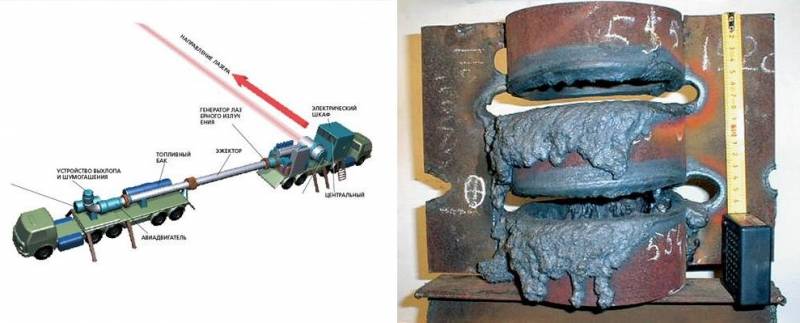

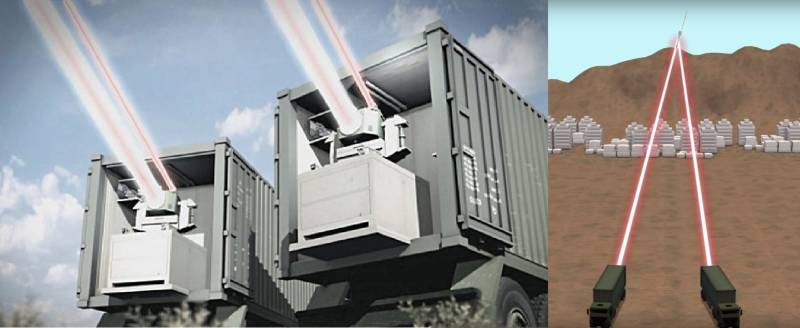
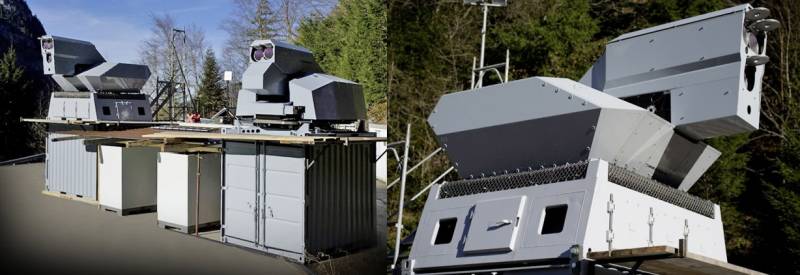

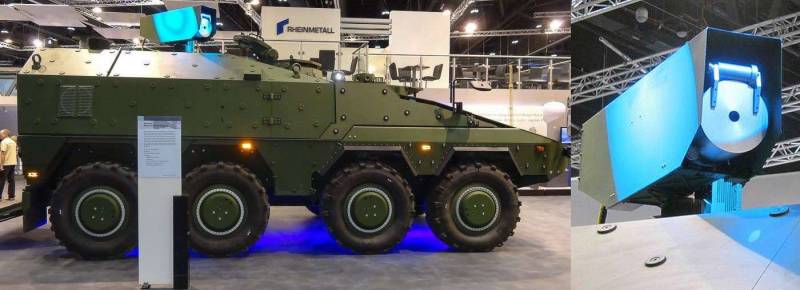

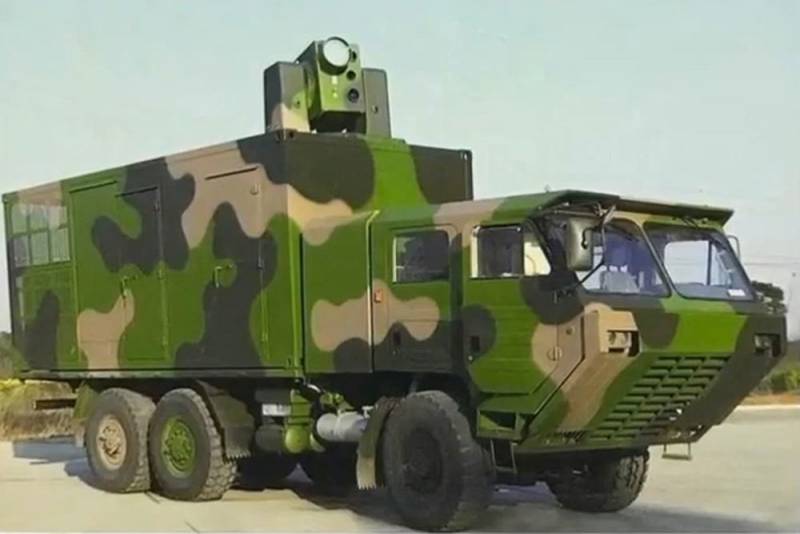
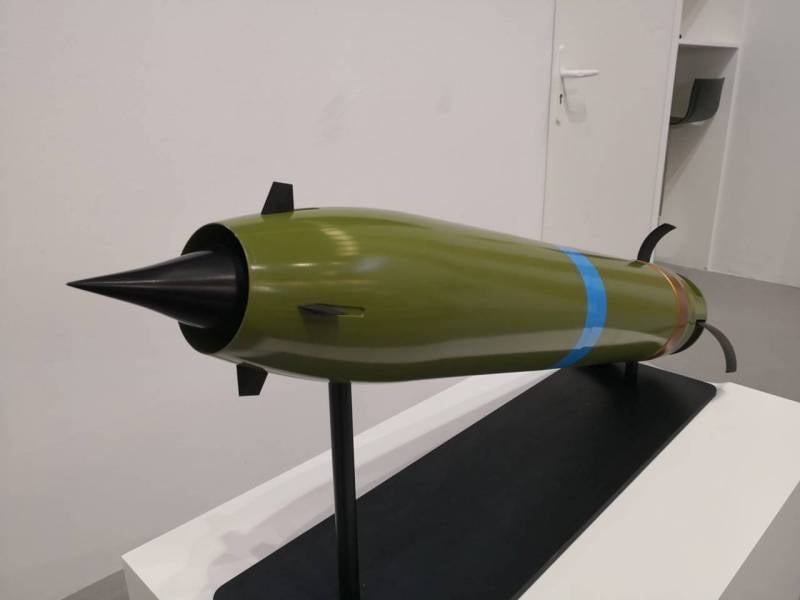

Information